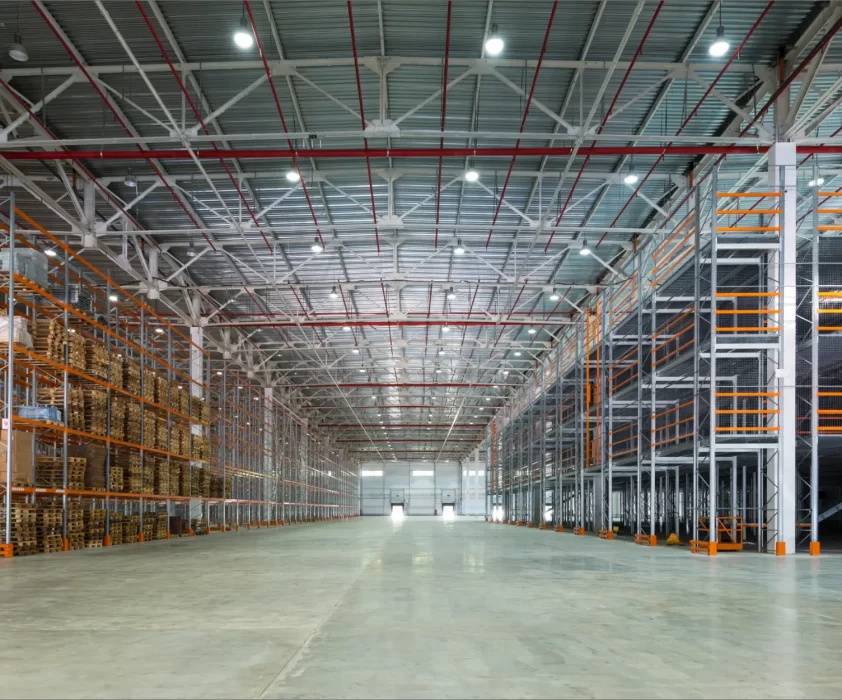
This article first appeared in the March edition of Colorado Real Estate Journal.
Metro Denver has experienced exponential growth over the past decade, with the Kenan Institute of Private Enterprises placing it on its top 10 list as the sixth-fastest-growing city in the country. With no sign of slowing down, Metro-Denver’s population of 3.3 million has steadily increased year after year, enticing companies and residents alike with a strong economy, business-friendly policies, diverse culture, and vibrant lifestyle.
As Denver’s population increases, submarkets surrounding the region have grown as well, with Denver’s southeast submarket garnering national attention from numerous industries and the associated influx of institutional developers and capital groups. It’s a substantial shift for the area, which was once off the radar for many institutional investors that considered the submarket limited to local credit and smaller tenants.
Fast forward to 2022, and tenant activity and lease rates within Denver’s southeast submarket reached record levels, with the growth experienced on track to continue throughout 2023. From an area deemed un-credit worthy to one that is now top-of-mind, many wonder:
- What generated the Southeast’s sudden appeal, and
- Is it sustainable?
The SES submarket boasts impeccable access to metro Denver, a highly educated workforce and land parcels ripe for development—factors overlooked a decade ago.
The appeal of Denver’s SES submarket really took hold in 2017, as Denver’s increasing population caused investors to take notice of land parcels just outside the city’s limits. With traffic congestion rising in central Denver, they identified the southeast as an ideal location—close enough to Denver to provide immediate access to various points along the supply chain, yet far enough away that operations weren’t beholden to the hustle and bustle of never-ending traffic. But improved traffic conditions weren’t the only draw.
The Denver Tech Center, the largest office submarket in metro Denver and one of the most significant tech hubs in the nation, is less than a 20-minute drive from the SES submarket, providing access to a highly educated and driven workforce. Combine that access with quality, developable land, and it’s no surprise that institutional investors identified the southeast as the perfect hub for manufacturing and light distribution operations.
Companies with an existing presence in Denver and those completely new to the region migrated to the southeast, resulting in steady demand for industrial space from 2017 onward. Capital continued to pour in, creating an abundance of ownership and development opportunities. While the pandemic certainly created a pause in tenant demand for this submarket, late in 2021, tenants began to flood the area, signing leases at a record pace.
The pause in activity that took place in 2020 in Denver’s SES submarket created substantial, pent-up demand.
Development projects that were already underway before the pandemic began were delivered as scheduled in 2020, creating an oversupply of industrial space. As a result, the market within the southeast became oversaturated, causing new developments to sit vacant—with little to no activity, which only increased feelings of hesitancy among investors and occupiers.
The second half of 2021 was far different, bringing a renewed sense of momentum to the marketplace as the economy stabilized and credit tenants began competing for vacancies. Existing footprints expanded within the southeast, and new industries emerged, with new deals signed exceeding a record 2 million square feet in 2022.
This surge in tenant activity wasn’t solely the result of private sector innovation or a shift within the economy but government contracts awarded to numerous Colorado companies, specifically within the aerospace industry. With Centennial Airport (the third-busiest private airport in the U.S.) at the heart of the SES Submarket, the location proved optimal, with Boom Aerospace, Sierra Space, and Beehive Industries moving into the region.
Naturally, increased demand caused lease rates to climb, jumping from an average of approximately $8.25 in 2019 to an average of approximately $10.50 in 2022, an increase of 21% over three years. As developments deliver and absorb in 2023, demand is expected to continue, with the stability of government-awarded contracts fueling this heightened need.
Even with economic uncertainty surrounding 2023, prices within Denver’s SES submarket are on an upward trajectory and slated to continue to increase.
Though there is no shortage of economic predictions for the year ahead, they do not seem to be affecting the southeast’s outlook.
Almost all development projects that have started are set to continue and deliver as scheduled; however, once they do, remaining land parcels available for industrial development will be extremely limited. This lack of availability, combined with rising interest rates, will, in fact, cause additional development to slow down, dwindling supply. As such, lease rates will likely increase further as the southeast becomes a supply-constrained, infill market.
Once viewed as an underdog within the growing metro Denver region, the SES submarket is truly now coming into its own.
Tyler Reed is Executive Managing Director for Stream Denver, providing overall leadership for the market, representing numerous institutional landlords, and providing Stream clients with the highest level of service.
